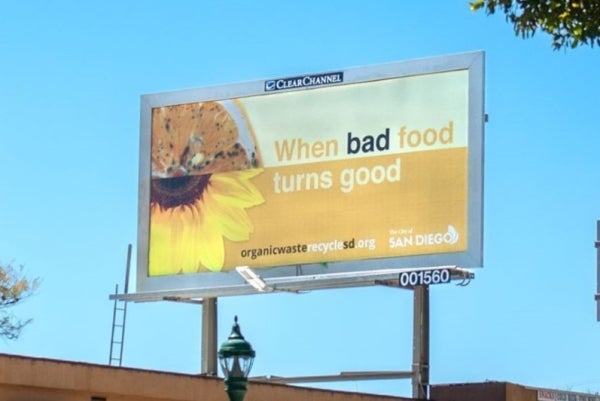Communicating with the Public
Paid Advertising

Staff should work with management to allocate any necessary funds for paid advertising to inform or engage the public. Set clear goals for the advertisement (ad) audience demographics and number of viewers. Work with the department’s Public Information Officer or Communications Department to create engaging ads that have clear calls to action, monitor the ads and make any necessary adjustments. In addition, work with ad publishers to make sure the ads are reaching the desired stakeholders for the campaign.
Potential ad channels
- Billboards: Billboards are a large-scale type of ad, like posters and banners, that can be seen from far distances. Be aware that billboards and signs are regulated by the San Diego Municipal Code Chapter 14, Article 2, Division 12and permitting requirements of Chapter 12, Article, 9, Division 8.
- Outdoor and transit ads: Ads that are wrapped onto the side of public transit, benches and transit shelters can reach public transit riders and audiences who are passing by in-person.
- Online ads: Online ads can display on select webpages based on key information gathered from a user’s browsing history. This type of advertising can be purchased from services such as Google Ads and Amazon Ads, and can reach many people digitally.
- News organizations: These can be platforms to capture audiences that rely on local news for their information.
- Webpages: News organizations may post engagement events on their webpages and amplify information through online news articles.
- Newspapers: Print ads can be an effective way to share information about projects or engagement events to people that do not get their information online.
- Social media: Social media platforms can capture a variety of audiences and offer unique opportunities for paid ads like Facebook event boosts.
- Radio ads: Radio stations and music streaming services can run ads at regularly scheduled intervals.
- Text messages: Platforms such as Constant Contact have the option for short message service, more commonly known as SMS. These ads work by texting contact lists brief informational messages.
- Television (TV): TV ads are another way to reach a wide variety of audiences.
In the Inclusive Public Engagement Guide online survey, which was self-selecting, when asked where they find trustworthy information about what is happening in their community, news platforms (e.g. internet news, newspaper, TV news) were respondents’ most popular answer (74), followed by social media (38) and community organizations (23).
Ways to increase effectiveness
- Impressions: Web-based ads are often sold by the number of times an ad is displayed on a selected website or platform. Increasing this number may increase audience reach. For physical ads, place them in areas with high traffic, or in publications that are widely distributed.
- Keywords: Match words or phrases to the ad campaign that is being run. For example, if the campaign is advertising a public engagement event about sea level rise, consider keywords like “beach”, “coast”, or “flooding” to target users who are wanting to learn more about those topics.
- Geo-targeting: Location-based data can be used to send an ad to people who may be interested in a project in a specific location.
Communicating with the Public
- Introduction
- Affirmative Language
- Clear, Simple and Inclusive Language
- Communication Strategies for Different Learners
- Conflict Management
- Document Accessibility
- Facilitation of Engagement Events
- Inclusive Graphic Design
- Nonverbal Communication
- Paid Advertising
- Public Speaking
- Translation and Interpretation
- Trauma-informed Engagement


 Inclusive Public Engagement Guide
Inclusive Public Engagement Guide